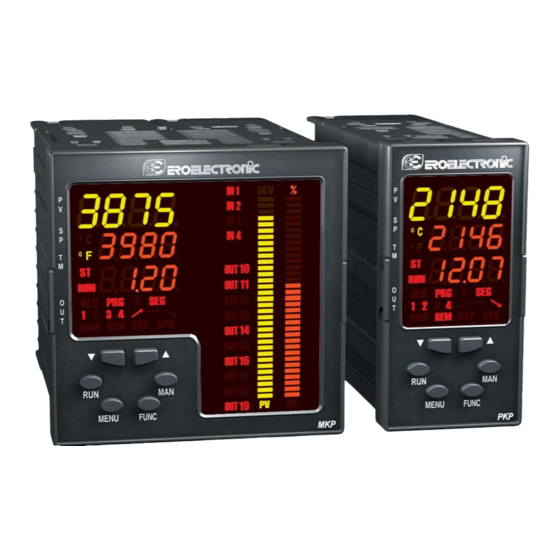
ero electronic PKP Manuals
Manuals and User Guides for ero electronic PKP. We have 1 ero electronic PKP manual available for free PDF download: User Manual
ero electronic PKP User Manual (173 pages)
Brand: ero electronic
|
Category: Controller
|
Size: 0 MB
Table of Contents
-
Index3
-
-
Tc Input9
-
Linear Input10
-
Logic Inputs12
-
-
-
Monitor Mode33
-
Modify Mode34
-
OUT 5 Range42
-
OUT 6 Range43
-
Split Range45
-
Controller54
-
Current Time69
-
Current Day70
-
OUT 1 Status71
-
-
Preliminary72
-
-
Alarm 1 Type91
-
Alarm 2 Type94
-
Alarm 3 Type95
-
Alarm 4 Type97
-
Run Time Group 8100
-
Run Time Group 9102
-
Stand-By.105
-
-
Programmer Mode105
-
Edit106
-
Manual106
-
Run106
-
Wait106
-
Fast107
-
Hold107
-
Jump107
-
Indicators109
-
Clock Calendar114
-
Serial Link115
-
Lamp Test116
-
Manual Mode116
-
Edit Mode118
-
-
Run Time Group P119
-
Event 1 Enabling120
-
Abort133
-
-
Contoller Mode135
-
Error Messages141
-
-
Rtd148
-
Linear Inputs148
-
Control Actions150
-
Output Limiters151
-
Alarms153
-
Events154
-
Deviation Alarm154
-
Maintenance155
-
Coding170
Advertisement
